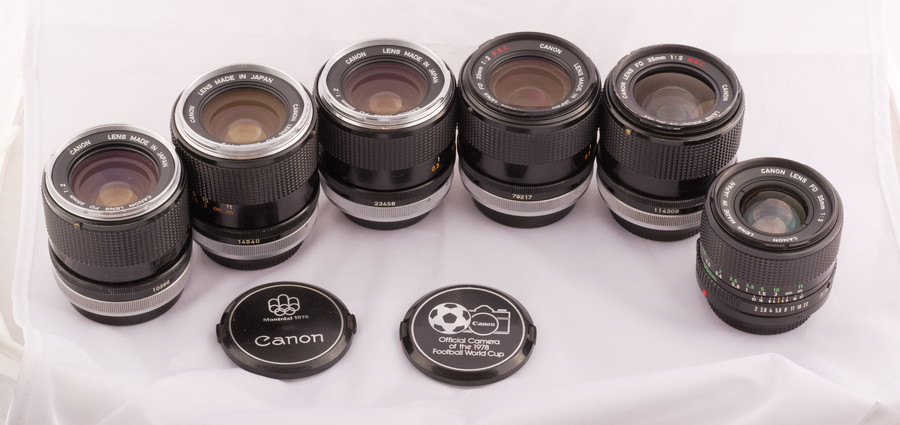Canon Lens FD 35mm F/2.0 |
|
| [Lummukka.com] | [Canon FL and FD mausoleum] |

| Lens | Version | Optical design | Front Lens Convexity | Min aperture | Mass (g) |
Thoriated (radioactive) | S/N range | Coating (*) |
First datecode |
| FD 35/2 | I (chrome nose) | 1 | Concave | 16 | 420 | Yes | 10001-12199 | S.C. | March 1971 |
| FD 35/2 | II (chrome nose) | 1 | Concave | 16 | 420 | Yes | 12200-20000 | S.C. | Approx. May 1971 |
| FD 35/2 | III (chrome nose or black nose w/o SSC) | 1 | Concave | 16 | 420 | Yes | >20001 | S.C. | Approx. August 1971 |
| FD 35/2 | SSC I | 1 | Concave | 16 | 370 | Yes | >50000 | S.S.C | March 1973 |
| FD 35/2 | SSC II | 2 | Convex | 22 | 345 | No | >100000 | S.S.C | April 1976 |
| FDn 35/2 | New FD | 3 | Convex | 22 | 245 | No | S.S.C | December 1979 |
